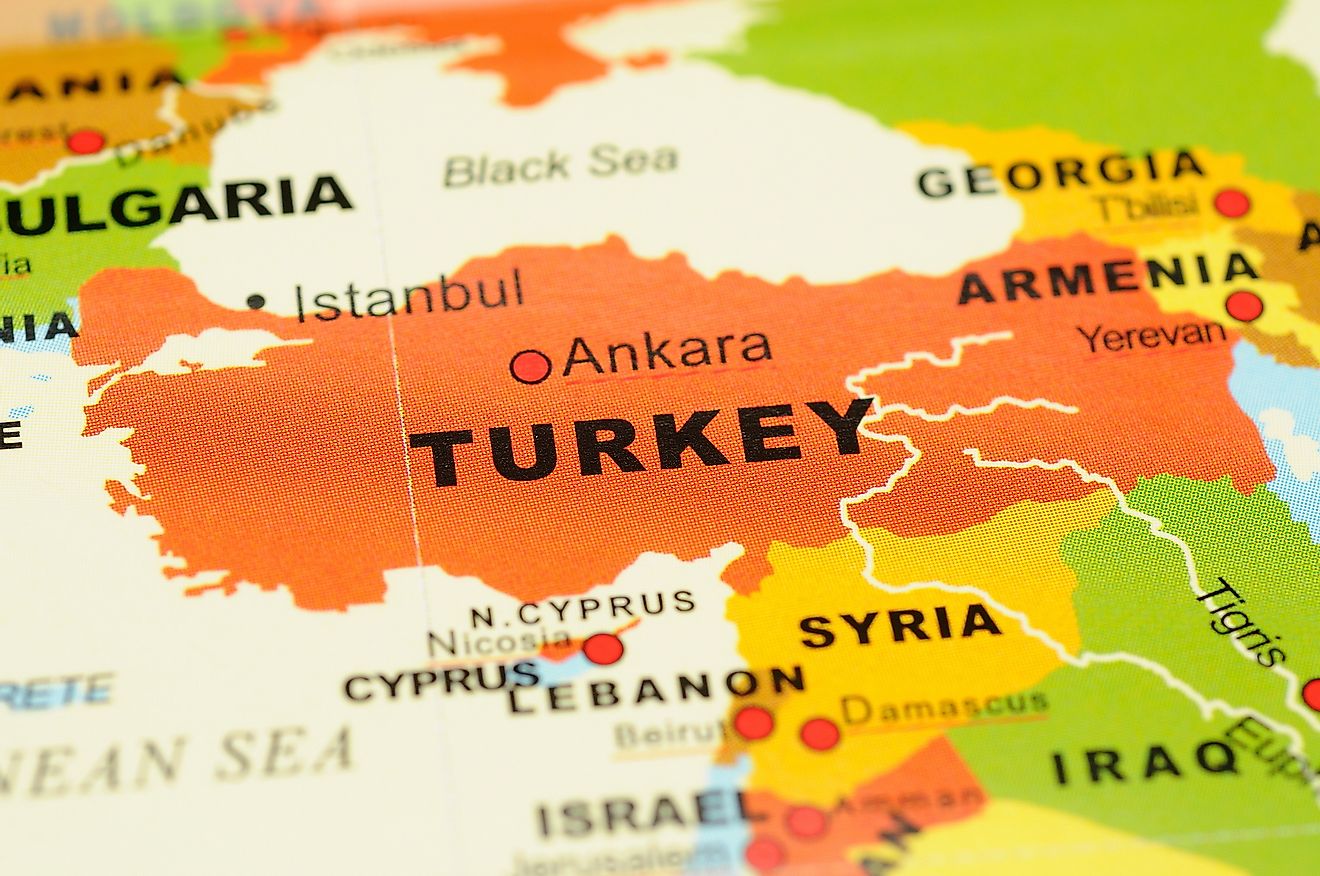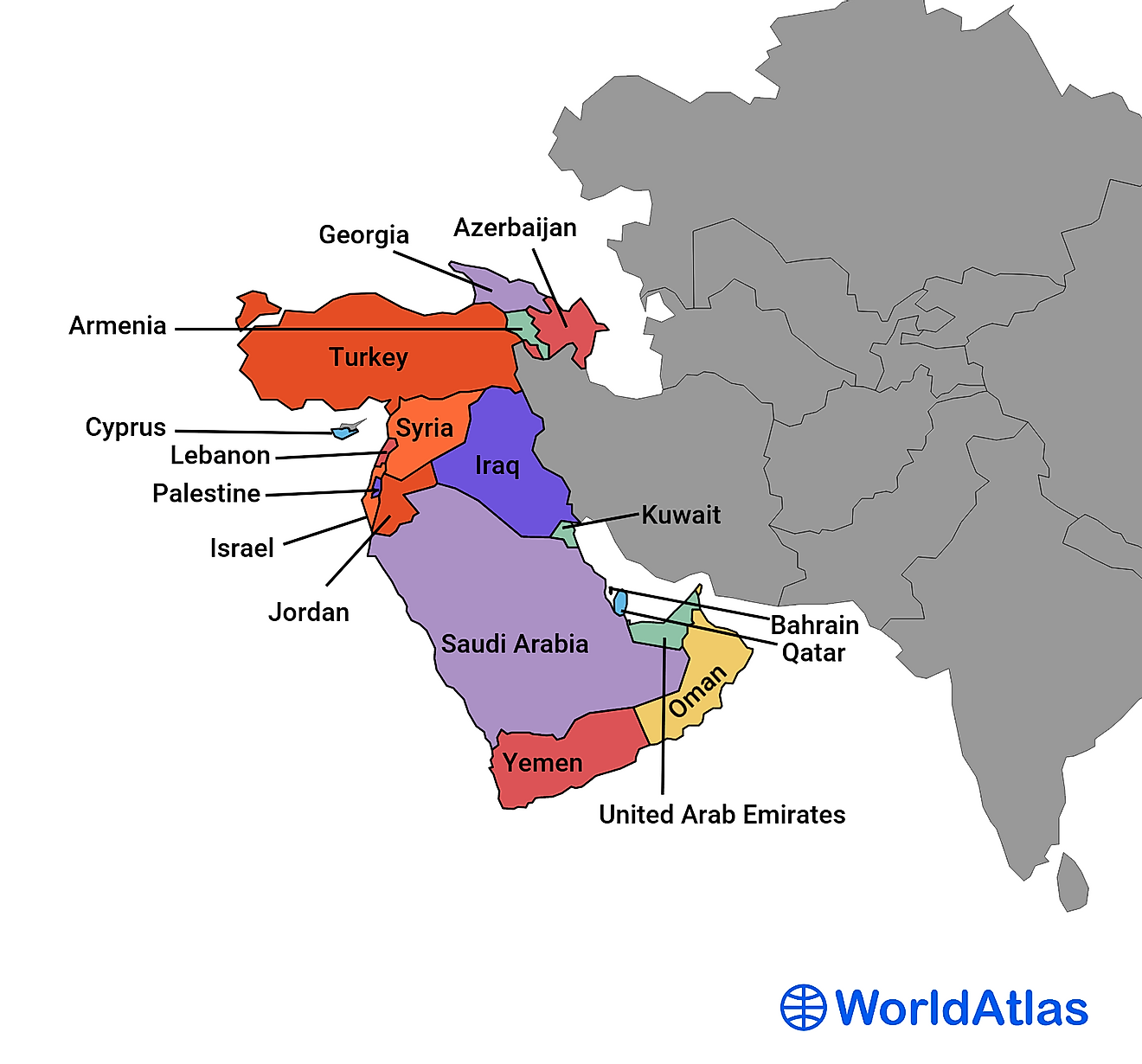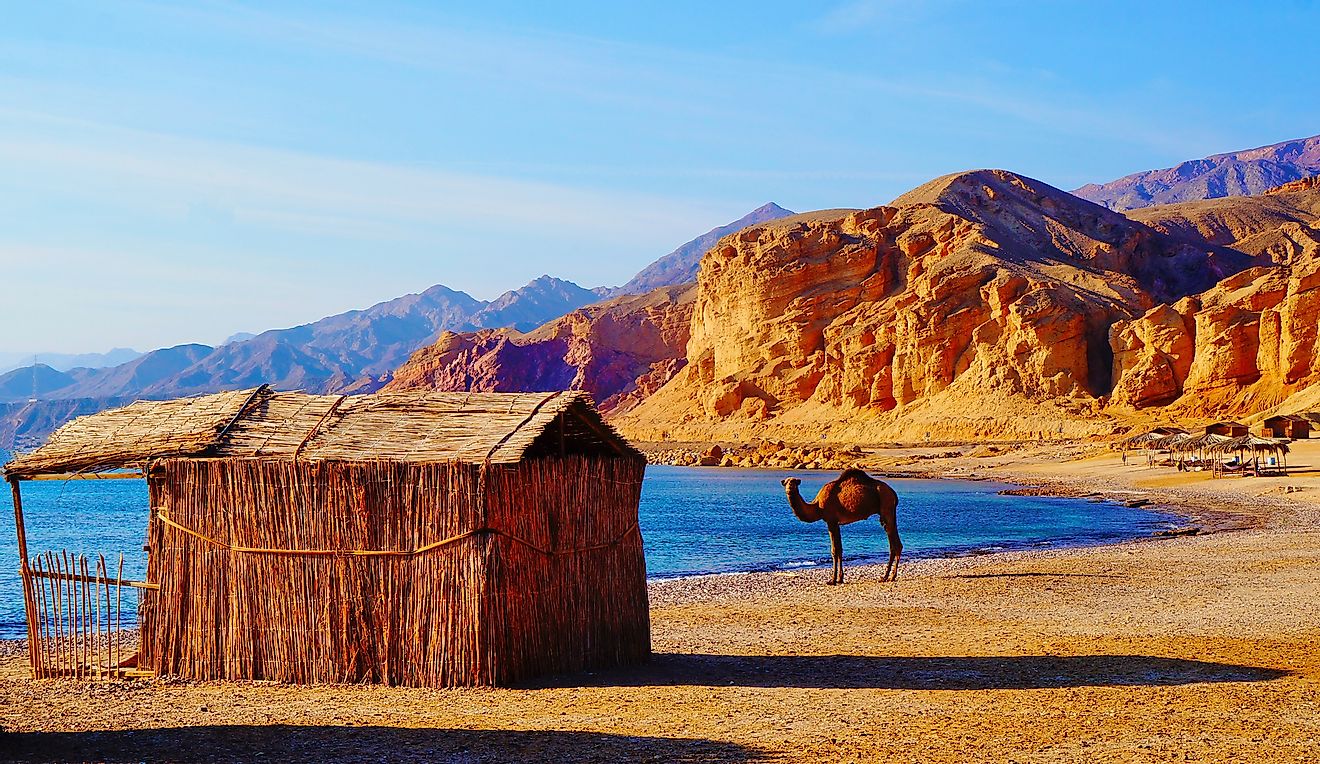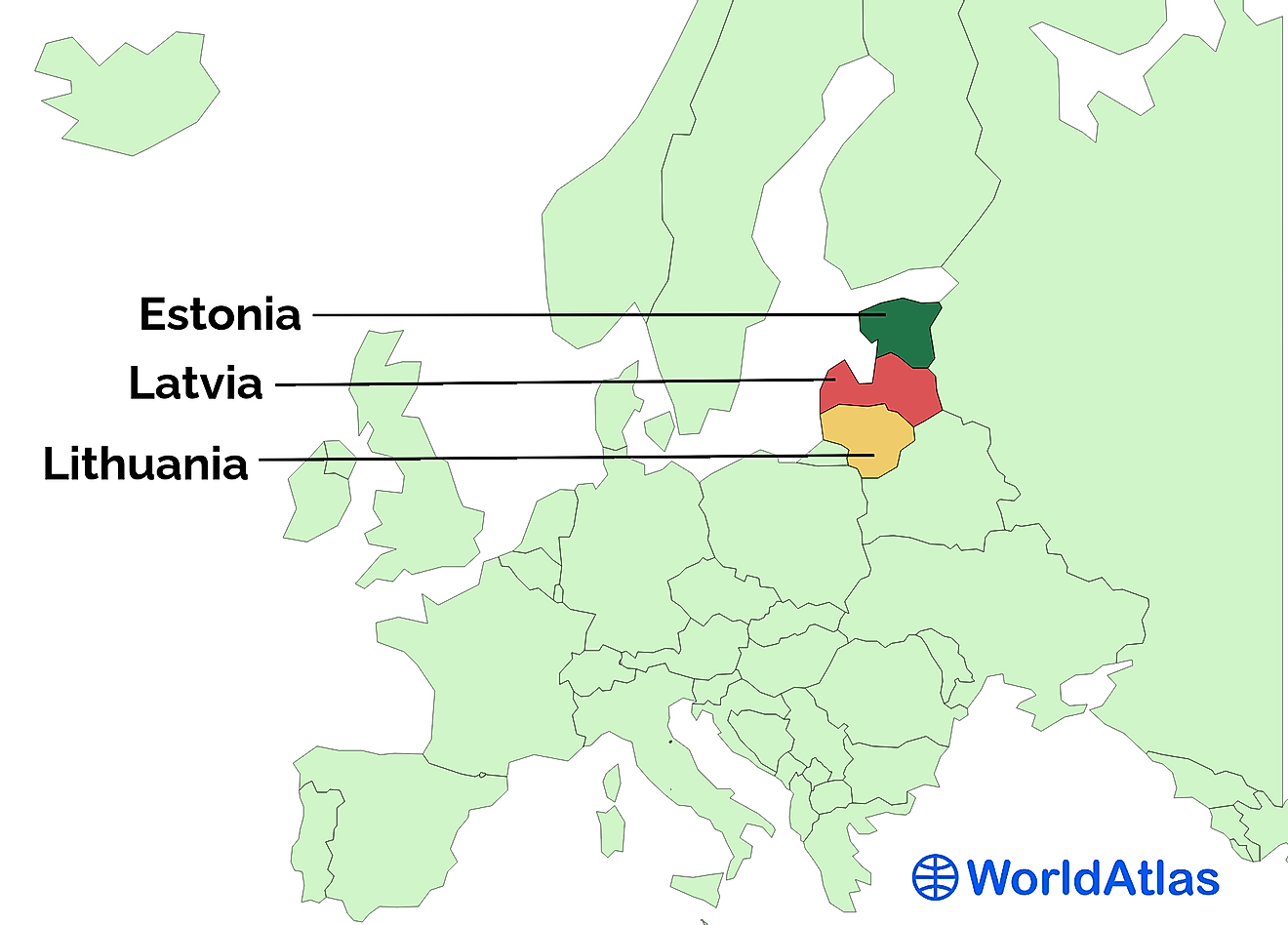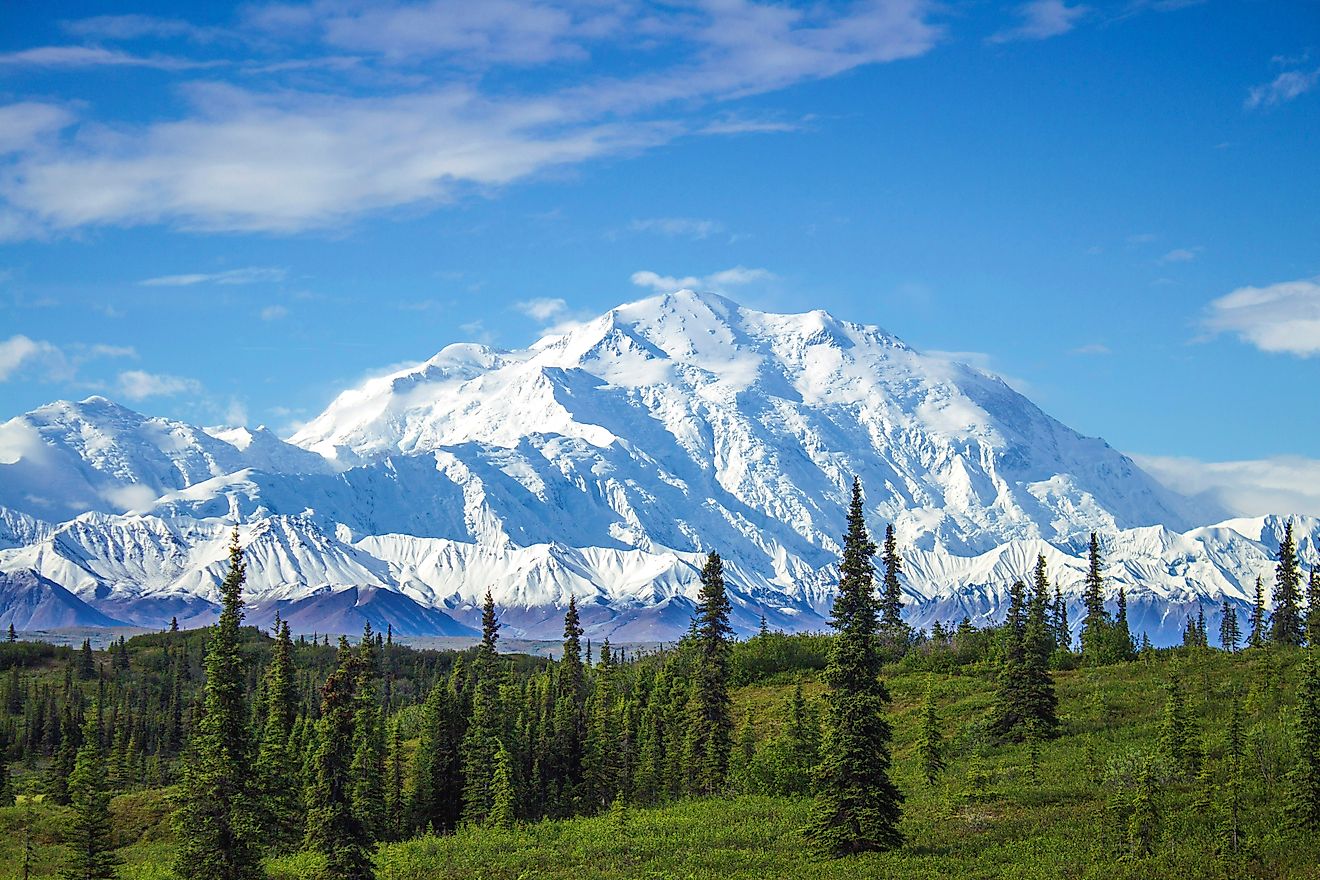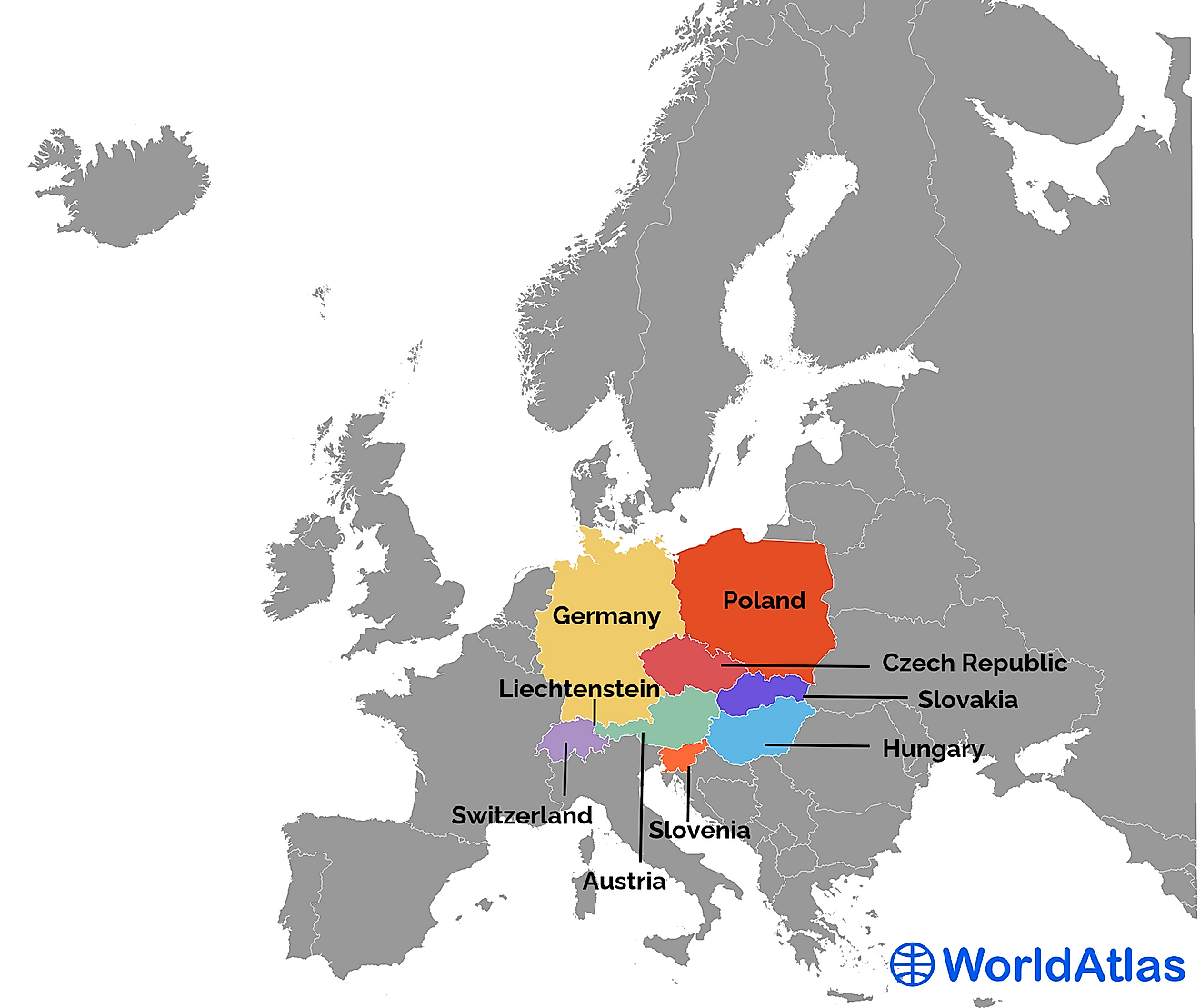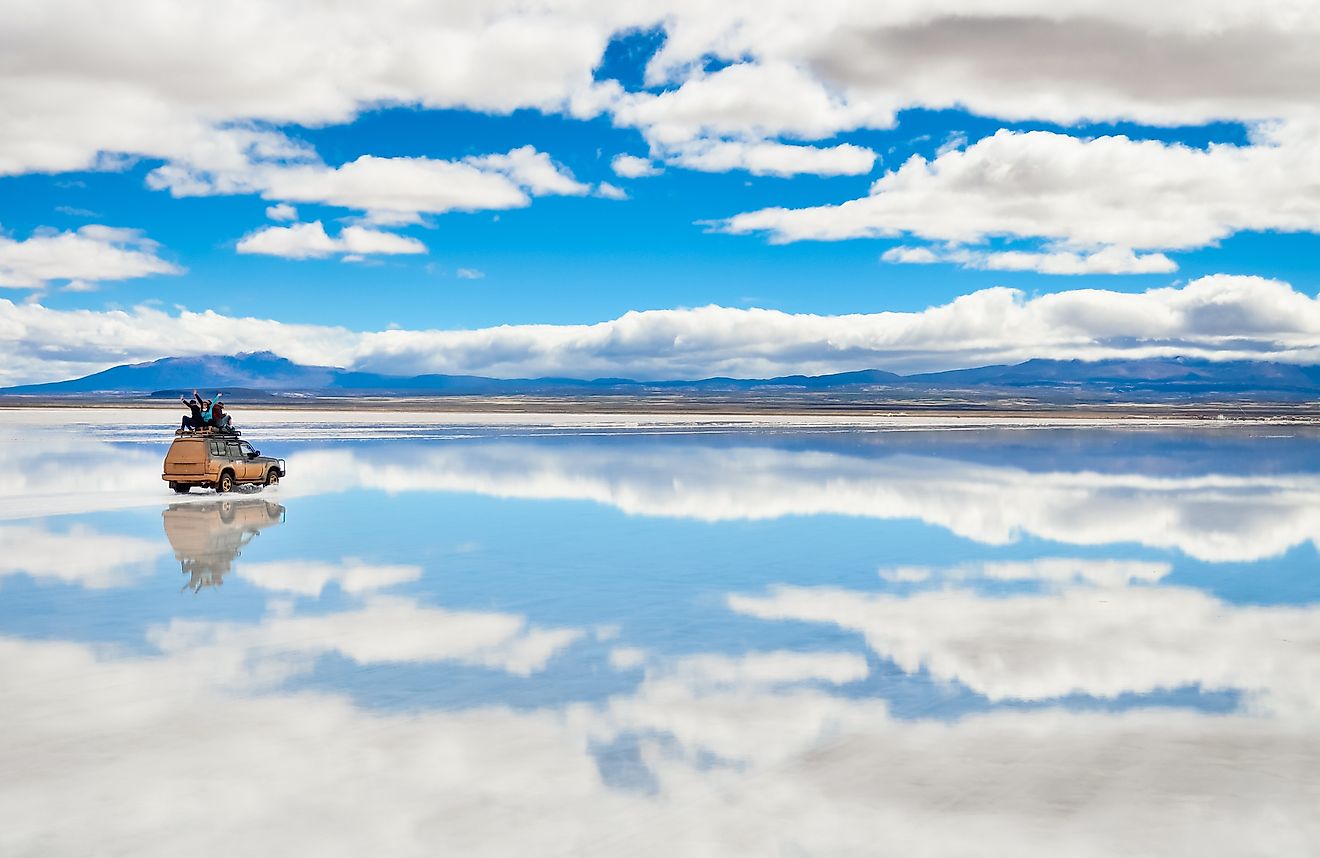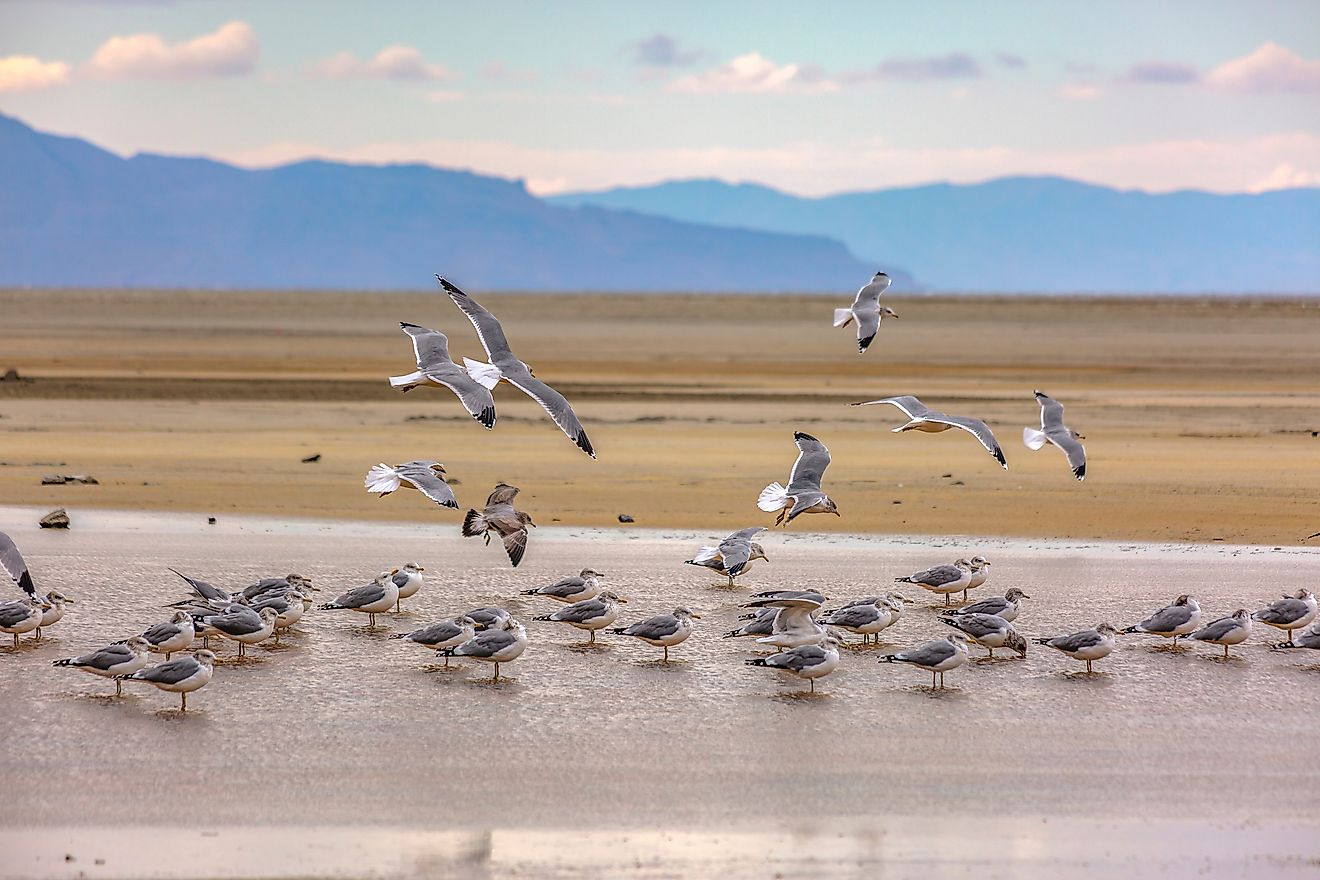Is Greenland A Country?
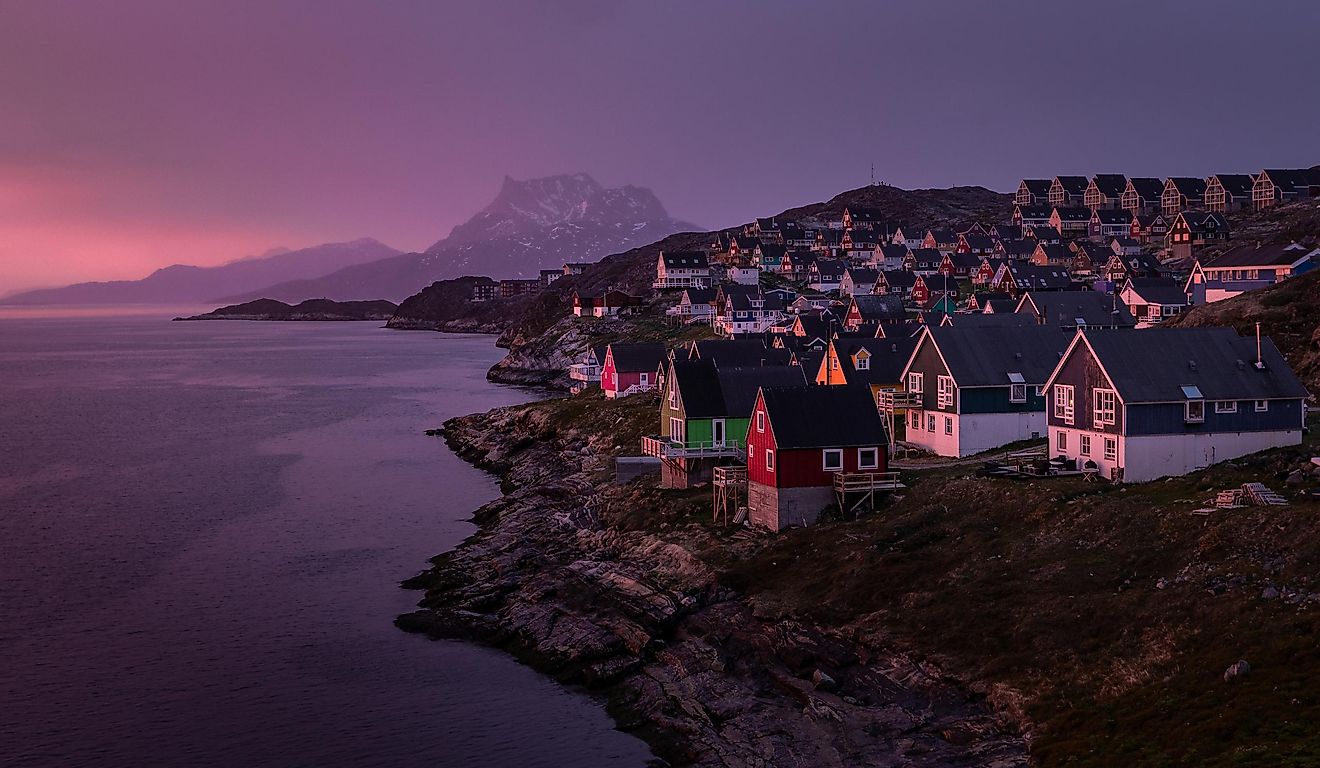
- Greenland is the largest island in the world.
- Greenland is a dependency of Denmark, but has its own government which manages the island's internal affairs.
- Most of Greenland is covered by a vast ice sheet.
- The Inuit are the original inhabitants of Greenland.
- Since Greenland is a possession of Denmark, it is politically linked to Europe, but is geographically part of North America.
Greenland is the world’s largest island. It is situated in the far north between Baffin Bay and the Greenland Sea. It traverses the North Atlantic Ocean and the Arctic Ocean. Greenland is an autonomous dependency of Denmark, which means that it is politically part of Europe. From a geographical perspective, however, Greenland is part of North America. Its people are mostly of Inuit heritage and are related to the Inuit who live in northern Canada.
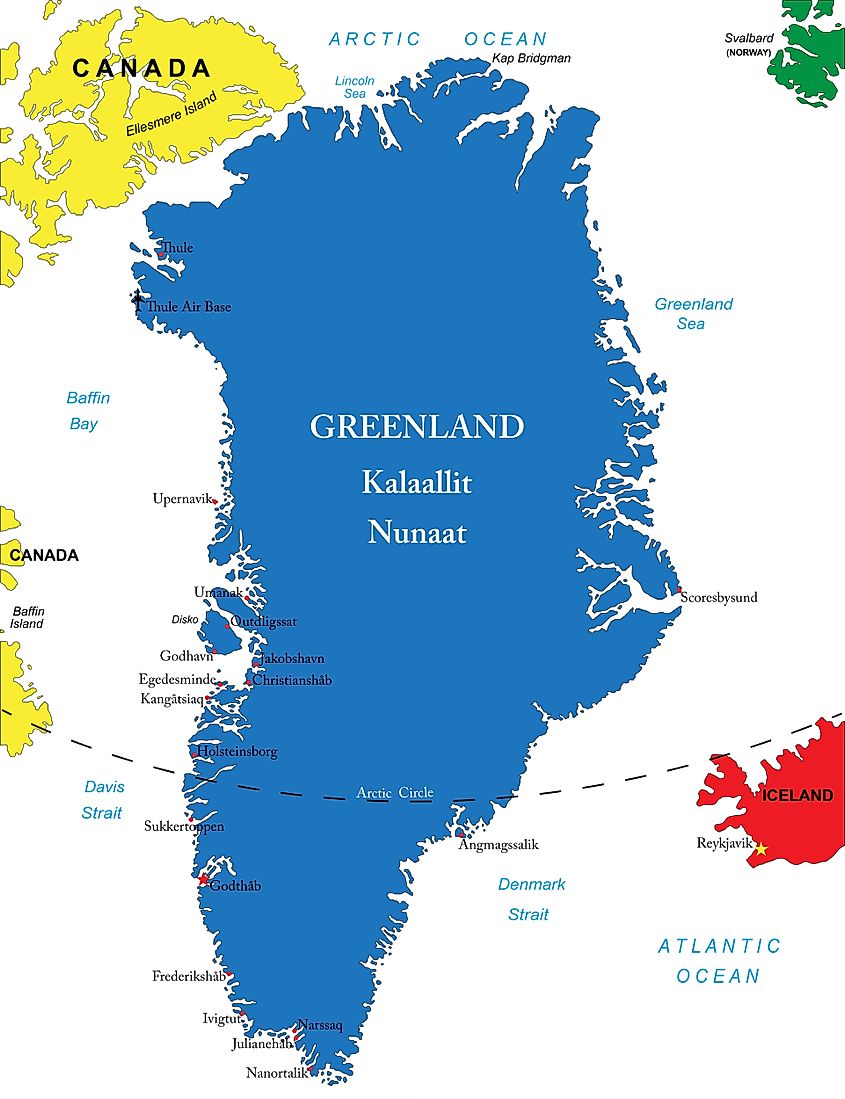
Greenland's History
It is believed that Greenland’s first inhabitants came from the North American mainland to settle on the island between 4,000 BCE and 1,000 CE. Most of Greenland’s current Inuit population can trace their lineage all the way back to these original inhabitants. In the late 10th century, the first Europeans arrived in Greenland. They were Norsemen from Iceland, who settled in a southern part of the island, which was previously uninhabited. Due to a cooling climate, however, the Norse settlements all died out by the 15th century.
European settlement did not return to Greenland until 1721, when the Royal Greenland Trading Company of Denmark established a colony on the island. Greenland did not formally become part of Denmark, however, until 1953, when the Danes amended their constitution to incorporate the island and give its residents representation in the Danish parliament. In 1979, Greenland was granted home rule, which meant that it was given some autonomy to manage its own internal affairs.
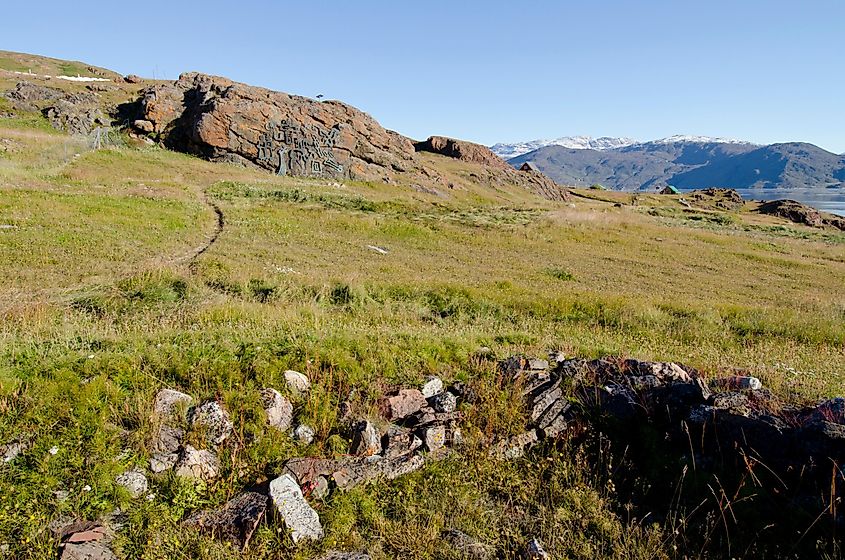
One of the original Norse settlers of the 10th century was a man named Eric the Red, who named the island Greenland in the hopes that doing so would attract more settlers to the territory. About 2.5 million years ago, Greenland was actually quite green. During the time of Eric the Red, up until today, however, most of the island has been covered by ice.
Greenland's Geography
A gigantic ice sheet covers most of Greenland. Whereas Greenland has a total area of 2.16 million km2 , which includes small offshore islands, the ice sheet that covers it has an area totaling 1.8 million km2, which means that just 350,000 km2 of the island is ice-free. This ice sheet has covered large parts of Greenland for 2 to 3 million years. At its fringes, the ice sheet is just a few meters thick, but at its thickest point, it is about 3,200 m thick.
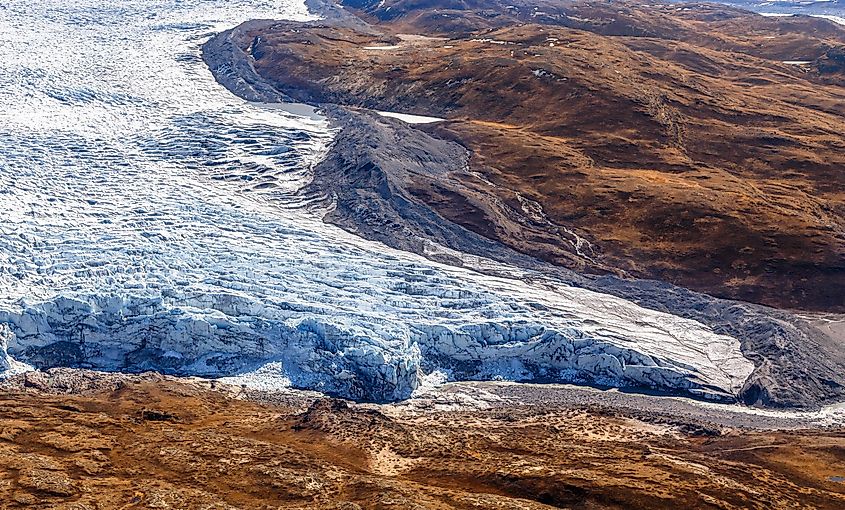
The ice in Greenland contains 10% of the world’s freshwater. Because of global warming, however, Greenland’s ice is melting at a more rapid pace than has been observed before the turn of the millennium. In fact, researchers now believe that every year, the ice loses more mass than it creates. The more rapid melting of Greenland’s ice is contributing to rising sea levels. In theory, if the entire ice sheet were to melt, sea levels around the world would rise by 6 to 7 m.
Most of Greenland’s topography is flat, but there are mountainous areas on the coast. The tallest mountain in Greenland is called Bunnbjorn Fjeld, which is 3,700 m high. As you might expect, the climate of Greenland is quite cold due to its high latitude. Even summers are not very warm. For instance, Nuuk, which is Greenland’s capital and largest city, has an average high temperature of 9.9 °C in July. In January, the average low temperature is a cold -10 °C.
Greenlanders
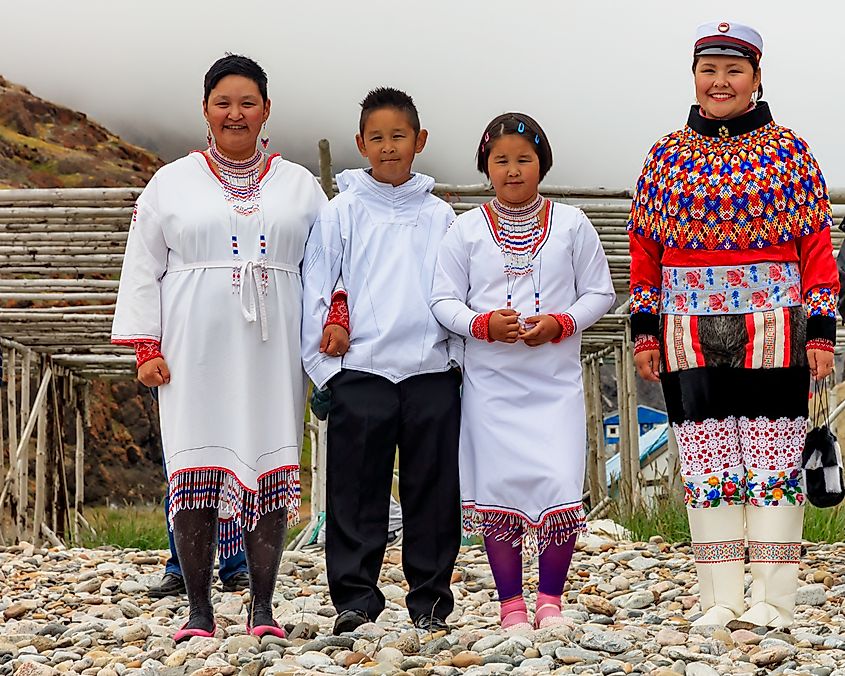
Although Greenland is a cold place to live, Greenlanders are quite accustomed to it. The Inuit have lived in the cold climates of Greenland and Canada for many centuries. Most full-blood Inuit are of the Kalaallit subgroup. There are also people of mixed Danish and Inuit ancestry. About 12% of Greenland’s population is of European descent, mostly Danish. Greenland has a total population of just under 57,000. The native language of Greenland is an Inuit language known as Greenlandic, of which Kalaallisut is the most widely spoken dialect. Most Greenlanders, however, speak both Greenlandic and Danish. In addition, English is widely taught in Greenland’s schools.
The culture of Greenland is mainly a fusion of Inuit and Danish culture. One tradition unique to Greenland is enjoying the period of the so-called midnight sun, which takes place between May 25 and July 25. During this period, the sun does not set. Thus, there are 24 hours of sunlight. June 21, the summer solstice, is a national holiday in Greenland.
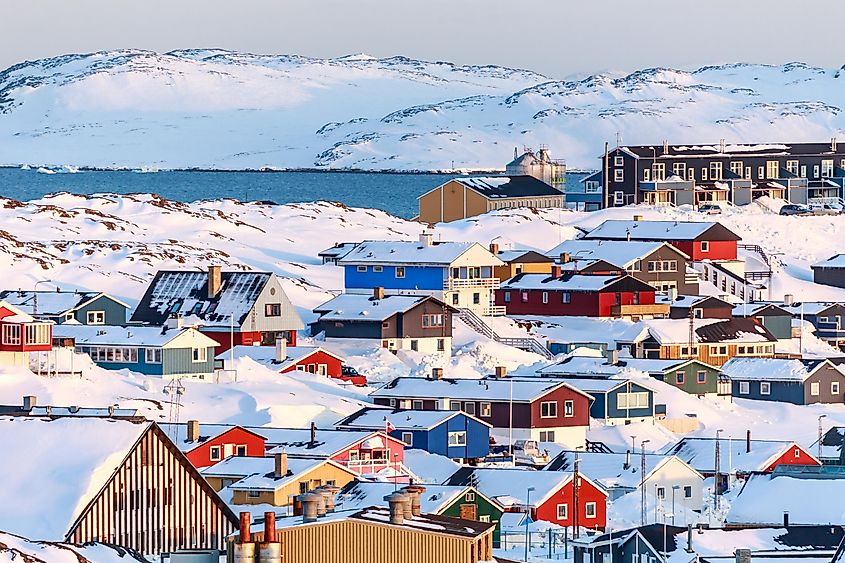
Greenland has a certain degree of autonomy, which means that its people are allowed to govern their own internal affairs without the interference of Denmark. The island has its own elected parliament, known as the Landsting, and its own prime minister. In 2008, Greenlanders voted on measures to give them even more autonomy, such as jurisdiction over criminal law and oil exploration. Many Greenlanders favor making Greenland an independent country. The issue of independence came up most recently in 2019, when the US President suggested that the US buy the island from Denmark. In response, the Prime Minister of Greenland said that the island was not for sale, and that it should work towards full independence.
Economy
Due to Greenland’s harsh climate and small population, economic activity on the island is limited. Fishing is one of Greenland’s major industries. In fact, fish, seafood, and other animals hunted on the island, such as whales and seals, are just about the only things that Greenland does not have to import. To prevent overfishing, quotas are assigned to each of the island’s administrative units. Certain species, such as the blue whale, are protected and cannot be fished. In addition, whale and seal meat cannot be exported and must only be used for local consumption.
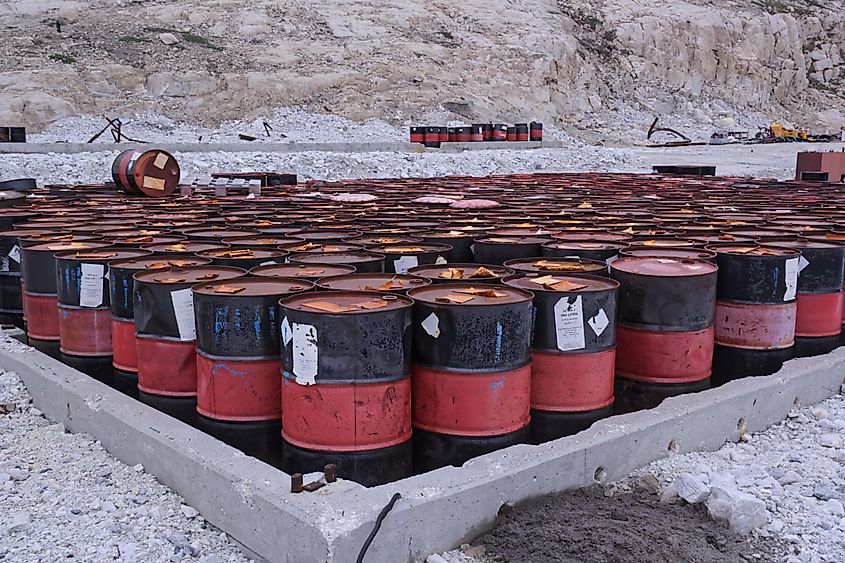
Other notable industries in Greenland are agriculture, mining, and tourism. Greenland is not without natural resources. The island is known to have deposits of gold, diamonds, and rubies, but its most valuable natural resource may be its oil and gas reserves. Greenland is still very dependent on Denmark for revenue. Two-thirds of Greenland’s budget consists of aid from the Danish government. Greenland’s economic development is also hampered by the fact that there is no mass road or rail infrastructure on the island. Traveling between towns requires a plane, boat, helicopter, snowmobile, or dogsled.
